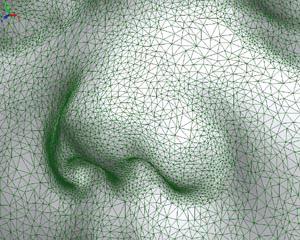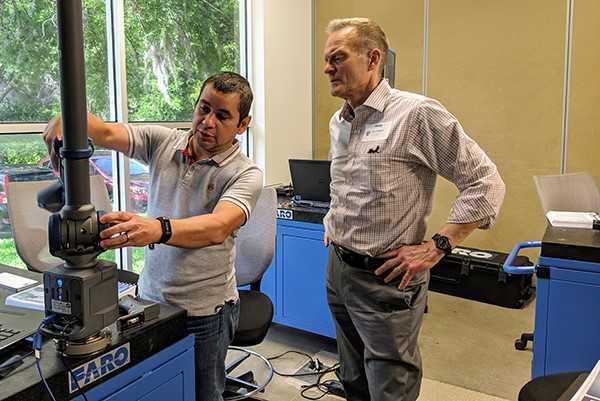Editor-in-Chief
- FMA
- The Fabricator
- FABTECH
- Canadian Metalworking
Our Publications
Categories
- Additive Manufacturing
- Aluminum Welding
- Arc Welding
- Assembly and Joining
- Automation and Robotics
- Bending and Forming
- Consumables
- Cutting and Weld Prep
- Electric Vehicles
- En Español
- Finishing
- Hydroforming
- Laser Cutting
- Laser Welding
- Machining
- Manufacturing Software
- Materials Handling
- Metals/Materials
- Oxyfuel Cutting
- Plasma Cutting
- Power Tools
- Punching and Other Holemaking
- Roll Forming
- Safety
- Sawing
- Shearing
- Shop Management
- Testing and Measuring
- Tube and Pipe Fabrication
- Tube and Pipe Production
- Waterjet Cutting
Industry Directory
Webcasts
Podcasts
FAB 40
Advertise
Subscribe
Account Login
Search
Additive manufacturing used to create model of a baby’s face
FARO engineer recalls how 3D-printing an infant’s face allowed a partially sighted mother to “see” her baby
- By Don Nelson
- May 14, 2019
I had never heard a touching story about 3D scanning or additive manufacturing until last week, when I visited FARO Technologies’ Lake Mary, Fla., facility to learn how the two technologies complement one another.
The company’s senior applications engineer and scanning arm specialist, Les Baker, was sharing some experiences from his 20-plus-year career. One story he told was set in the early 2000s, when he worked at a scanning service bureau in England.
A partially blind mother wanted a photograph by which to remember her infant son. But because of her inability to see, she needed something other than a 2D photo.
The engineering department at the university the mother attended offered to 3D-print a polymer model of the child’s face. Baker scanned the face of the baby, which slept through the scanning process, then prepared the datasets used to additively manufacture it.
“The mother wanted a 3D photograph in order to remember the baby as he was,” recalled Baker. “Of course, the mother could touch the baby’s face at any time, but a photograph captures a specific moment in time. That was what was not available to the mother—the opportunity to remember her baby’s face exactly as it was without the filter of memory to diminish it.”
About the Author

Don Nelson
2135 Point Blvd.
Elgin, IL 60123
(815)-227-8248
About the Publication
- Podcasting
- Podcast:
- The Fabricator Podcast
- Published:
- 04/16/2024
- Running Time:
- 63:29
In this episode of The Fabricator Podcast, Caleb Chamberlain, co-founder and CEO of OSH Cut, discusses his company’s...
- Trending Articles
- Industry Events
16th Annual Safety Conference
- April 30 - May 1, 2024
- Elgin,
Pipe and Tube Conference
- May 21 - 22, 2024
- Omaha, NE
World-Class Roll Forming Workshop
- June 5 - 6, 2024
- Louisville, KY
Advanced Laser Application Workshop
- June 25 - 27, 2024
- Novi, MI




























